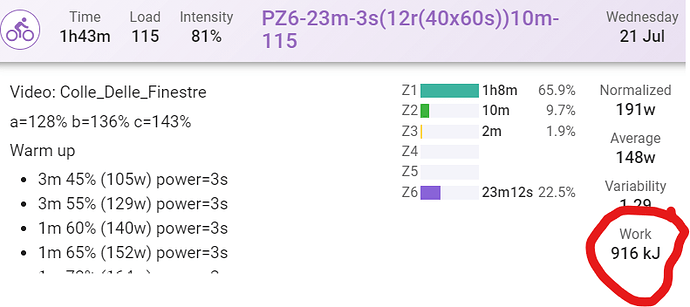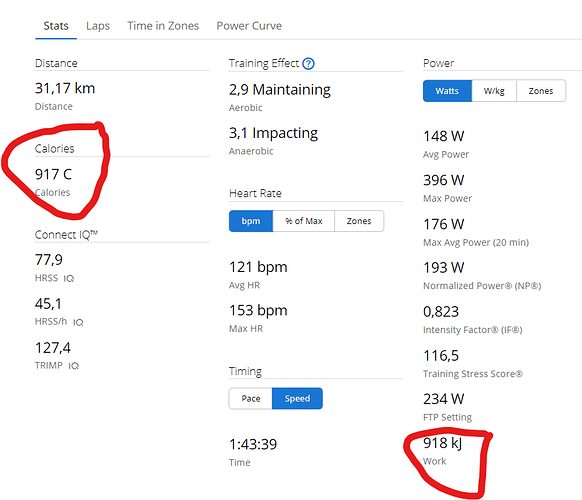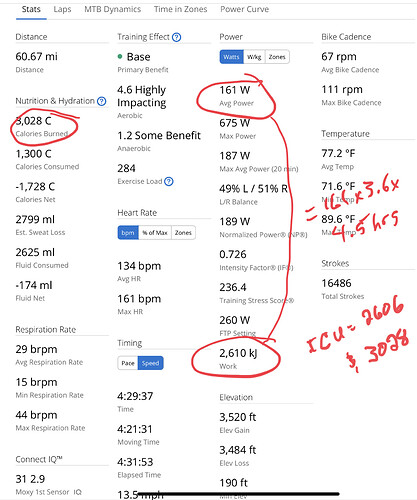Is there some assumption being applied about efficiency of the Work being done to arrive at kcal?
Intervals.icu uses whatever is in the .fit file or the value supplied by Strava (“the value supplied by its upload partners” i.e. also what is in the fit file). Garmin et al are probably assuming an efficiency of 21-23%.
I’m still confused on this matter.
The “WORK” bellow was the one calculate by Interval for a given planned workout.
And here you find both Garmin’s numbers from the executed workout:
And they are the same = 918Kj and 917C
My doubt : Based on efficiency shouldn’t “calories” and “work” be different?
Tks
It seems as though the calculations are something that Garmin is making, and not I.ICU. The “work” makes sense, as it follows the common convention of (avg W x 3.6 x hrs = kJs of” work”metric. My guess is that there are some data dropouts that result in a very minor difference between what Garmin calculates vs. what I.ICU calculates, as the I.ICU number is consistently lower by a handful of calories.
However, this leaves me more confused about how Garmin is calculating the kcal, which can be meaningfully different than the kJs calculated. I.e. ~418kcal in my recent 4.5 hour ride….
Answer : Divide the amount of kJs by 4.184 then divide by .25. Calories burned cycling are dependent on your Gross Metabolic Efficiency, but for most people, it’s between 20-25%. That means for every Calorie you burn produces around 1.045 kilojoules. For practical reasons, most cyclists approximate 1 kJ is equal to 1 Calorie.
your case : 2,610/4.84/0.25= 2,157
Mine : 917/4.84/0.25 = 758
but avg heart rate takes a toll


